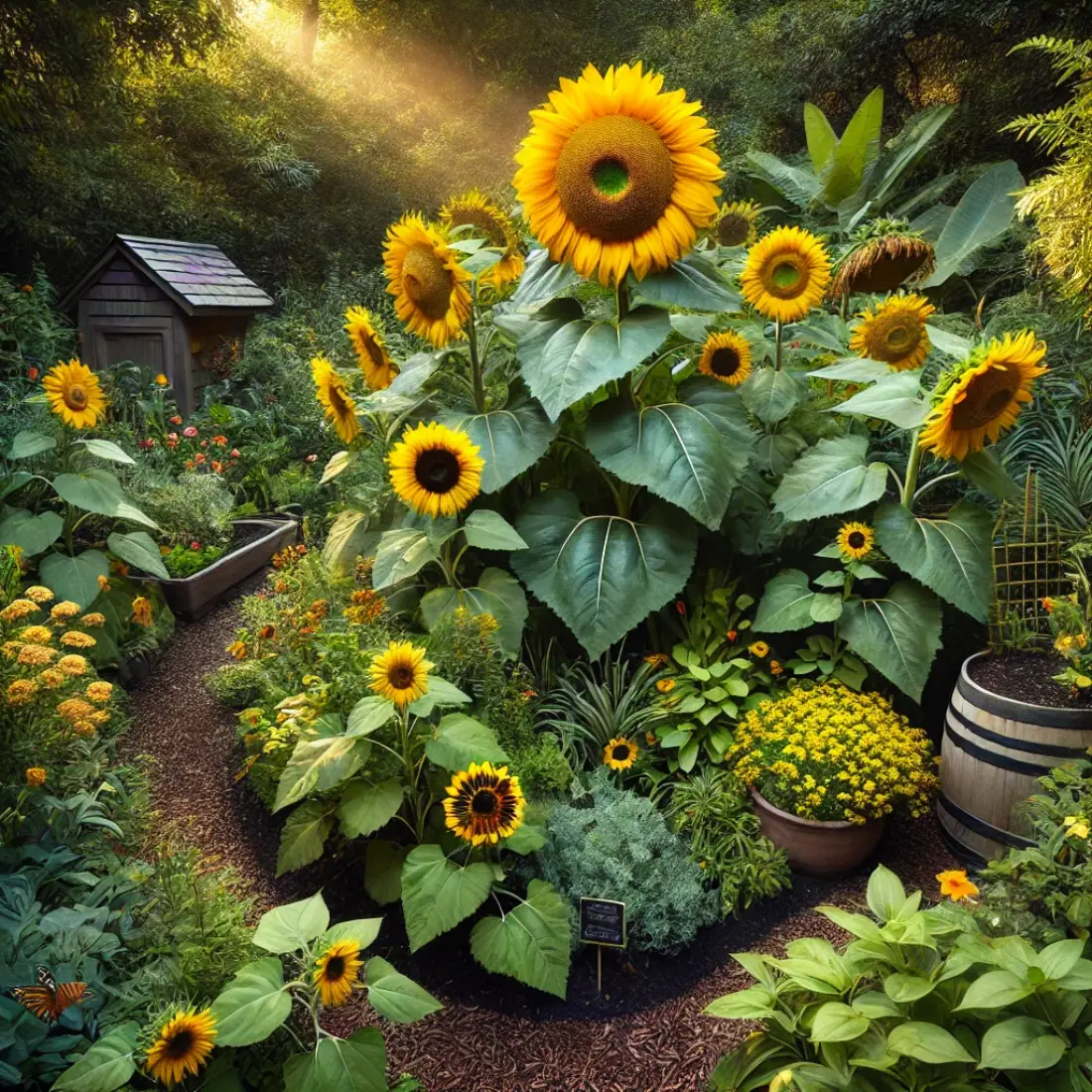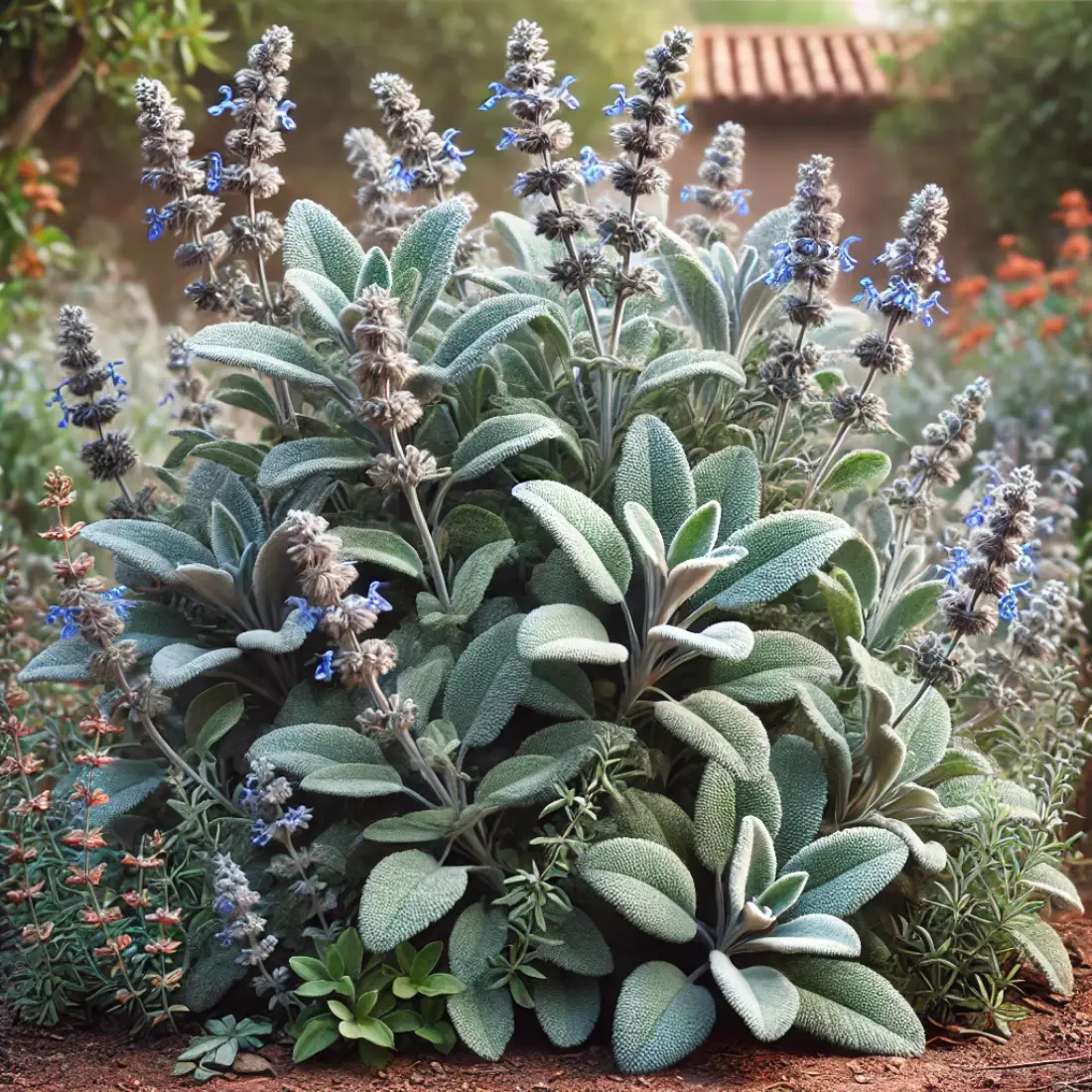Sunflowers are a stunning addition to any garden, with their vibrant blooms and towering heights. Growing sunflowers organically not only enhances their natural beauty but also promotes a healthier environment. Organic gardening ensures that your sunflowers thrive without the use of harmful chemicals, benefiting both your garden and the ecosystem.
- Ensure full sun exposure, at least 6-8 hours daily.
- Water deeply but infrequently to promote strong root growth.
- Use organic mulch to retain moisture.
- Regularly check for pests.
- Use natural remedies for pest control.
Choosing the Right Sunflower Variety
Selecting the right sunflower variety is crucial for a successful and beautiful organic garden. Here are some popular organic sunflower varieties to consider:
- Mammoth Sunflowers: Known for their impressive height and large flower heads, these are perfect for creating a dramatic garden backdrop.
- Autumn Beauty: Offers a mix of vibrant colors, including yellow, red, and orange, making it a visually stunning choice.
- Teddy Bear Sunflowers: Compact and bushy, with fluffy, double blooms, ideal for smaller gardens or container planting.
- Lemon Queen: Known for their pale yellow petals and strong stems, excellent for cut flowers and attracting pollinators.
- Velvet Queen: Features deep, rich red blooms, adding a touch of elegance and diversity to your garden.
When choosing a variety, consider factors like height, bloom size, and color to suit your garden’s aesthetic and space.

Growing Sunflowers Organically
Preparing the Soil Organically
Healthy soil is the foundation of organic gardening. It ensures that sunflowers receive the necessary nutrients. To prepare your soil organically, start by testing its pH and nutrient levels. Adding organic compost will enrich the soil and improve its structure. Incorporating well-rotted manure or green manure can also enhance soil fertility. Some of the best organic soil amendments include compost, aged manure, bone meal, and fish emulsion.
Planting Sunflowers
The ideal time to plant sunflowers is in late spring after the last frost when the soil temperature reaches at least 50°F (10°C). For the best results, purchase organic sunflower seeds from reputable suppliers to ensure they are free from chemicals and GMOs. Sow the seeds 1 inch deep and 6 inches apart, spacing rows about 30 inches apart to allow for proper air circulation. Once the seedlings reach 6 inches in height, thin them to about 1 foot apart.
Watering Sunflowers
Sunflowers require deep but infrequent watering to encourage strong root growth. It is essential to keep the soil moist, especially during the germination period. To retain moisture and suppress weeds, apply a 2-3 inch layer of organic mulch, such as straw or wood chips, around the base of the plants.
Organic Fertilizing Tips
Several types of organic fertilizers are suitable for sunflowers, including compost tea, fish emulsion, liquid seaweed, and bone meal. Apply compost tea or fish emulsion every 2-3 weeks during the growing season. Bone meal can be used at planting time to promote root development. Additionally, liquid seaweed can be used as a foliar spray to boost overall plant health.
Organic Pest and Disease Control
Sunflowers are susceptible to pests like aphids, caterpillars, and sunflower beetles, as well as diseases such as downy mildew, powdery mildew, and rust. To control pests organically, spray neem oil or introduce ladybugs for aphids, apply Bacillus thuringiensis (Bt) for caterpillars, and use diatomaceous earth or companion planting for beetles.
Prevent diseases by ensuring proper plant spacing, using resistant varieties, and applying organic treatments like baking soda spray for powdery mildew or sulfur spray for rust. Regularly remove infected leaves and garden debris to keep your sunflowers healthy.
Supporting Sunflowers
Tall sunflower varieties often require support to prevent them from toppling over, especially in windy conditions. Here are some methods to support them:
Staking:
- Use sturdy wooden stakes or bamboo poles.
- Place stakes in the ground next to the sunflower when it is still young.
- Secure the sunflower stem to the stake with soft garden ties or cloth strips to avoid damaging the stem.
Trellising:
- Build a simple trellis using wooden posts and natural twine.
- Guide the sunflower stems to grow along the trellis, tying them gently as they grow.
Caging:
- Use tomato cages or create your own with chicken wire.
- Place the cage around the sunflower to provide all-around support.
Companion Planting:
- Plant sunflowers near sturdy plants like corn that can provide natural support.
- Use the companion plants to shelter sunflowers from strong winds.
Harvesting Sunflowers
Knowing when to harvest sunflowers is crucial for obtaining the best seeds and blooms. Here are the signs that your sunflowers are ready for harvest:
- Petal Droop: The sunflower petals will start to wither and fall off.
- Back of the Head Turns Yellow/Brown: The back of the sunflower head (the calyx) changes color from green to yellow or brown.
- Seeds Look Plump: The seeds will appear full and plump. You can easily loosen them from the head.
- Head Tilt: The sunflower head may begin to droop downwards as it matures.
Organic Harvesting Techniques
Cutting the Heads:
- Use clean, sharp garden shears or scissors.
- Cut the sunflower head off the plant, leaving about 12-18 inches of stem attached.
- It’s best to harvest in the morning when the temperatures are cooler.
Drying:
- Hang the cut sunflower heads upside down in a dry, well-ventilated area.
- Place a paper bag over the heads to catch any falling seeds.
- Allow the heads to dry for several weeks until the seeds can be easily removed by rubbing two heads together or using your hands.
Extracting the Seeds:
- Once dried, rub the heads to dislodge the seeds.
- Collect the seeds in a bowl or container.
- Remove any debris and check for mold or pests before storing.
Post-Harvest Care
After harvesting your sunflowers, proper care is essential to maintain the quality of the seeds and flowers.
Drying and Storing Seeds:
- Ensure seeds are completely dry to prevent mold.
- Store seeds in airtight containers in a cool, dark place.
- Label containers with the variety and harvest date.
Uses of Harvested Sunflowers:
- Seeds: Enjoy as a snack, or save for planting next season.
- Petals: Use in crafts or as natural dye.
- Stems: Compost the stems or use them as plant stakes in the garden.
FAQs about Growing Sunflowers
What is the best time to plant sunflowers?
The best time to plant sunflowers is in late spring, after the last frost, when soil temperatures reach at least 50°F (10°C). This ensures optimal germination and growth.
How often should I water sunflowers?
Sunflowers need deep, infrequent watering to promote strong root growth. Water them thoroughly once a week, increasing to twice a week during hot, dry periods.
What organic fertilizers are best for sunflowers?
Organic fertilizers such as compost, fish emulsion, liquid seaweed, and bone meal are excellent for sunflowers. Apply compost tea or fish emulsion every 2-3 weeks during the growing season.
How can I prevent pests organically?
Prevent pests organically by using neem oil for aphids, Bacillus thuringiensis (Bt) for caterpillars, and diatomaceous earth for sunflower beetles. Introducing beneficial insects like ladybugs can also help control pests naturally.
Can sunflowers grow in pots?
Yes, sunflowers can grow in pots. Choose a large container with good drainage, use high-quality organic potting soil, and ensure the sunflower variety is suitable for container growing.
How do I store harvested sunflower seeds?
Store harvested sunflower seeds by first ensuring they are completely dry. Place them in airtight containers and store in a cool, dark place. Label containers with the variety and harvest date.
What are the common diseases affecting sunflowers?
Common diseases affecting sunflowers include downy mildew, powdery mildew, and rust. These can be managed organically through proper spacing, resistant varieties, and organic treatments like baking soda and sulfur sprays.
How tall can sunflowers grow?
Sunflower height varies by variety. Some dwarf varieties grow up to 3 feet tall, while larger varieties like the Mammoth can reach heights of 10-12 feet or more.
How can I support tall sunflowers?
Support tall sunflowers by using sturdy wooden stakes or bamboo poles. Place stakes next to young plants and secure the stems with soft garden ties. Trellises and cages can also provide support.
What are the benefits of growing sunflowers organically?
Growing sunflowers organically benefits the environment by reducing chemical use, promoting biodiversity, and improving soil health. Organic sunflowers are also safer for pollinators and can provide healthier seeds for consumption.










